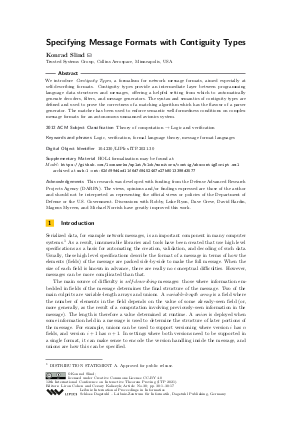@InProceedings{slind:LIPIcs.ITP.2021.30,
author = {Slind, Konrad},
title = {{Specifying Message Formats with Contiguity Types}},
booktitle = {12th International Conference on Interactive Theorem Proving (ITP 2021)},
pages = {30:1--30:17},
series = {Leibniz International Proceedings in Informatics (LIPIcs)},
ISBN = {978-3-95977-188-7},
ISSN = {1868-8969},
year = {2021},
volume = {193},
editor = {Cohen, Liron and Kaliszyk, Cezary},
publisher = {Schloss Dagstuhl -- Leibniz-Zentrum f{\"u}r Informatik},
address = {Dagstuhl, Germany},
URL = {https://drops.dagstuhl.de/entities/document/10.4230/LIPIcs.ITP.2021.30},
URN = {urn:nbn:de:0030-drops-139252},
doi = {10.4230/LIPIcs.ITP.2021.30},
annote = {Keywords: Logic, verification, formal language theory, message format languages}
}

 Creative Commons Attribution 4.0 International license
Creative Commons Attribution 4.0 International license





